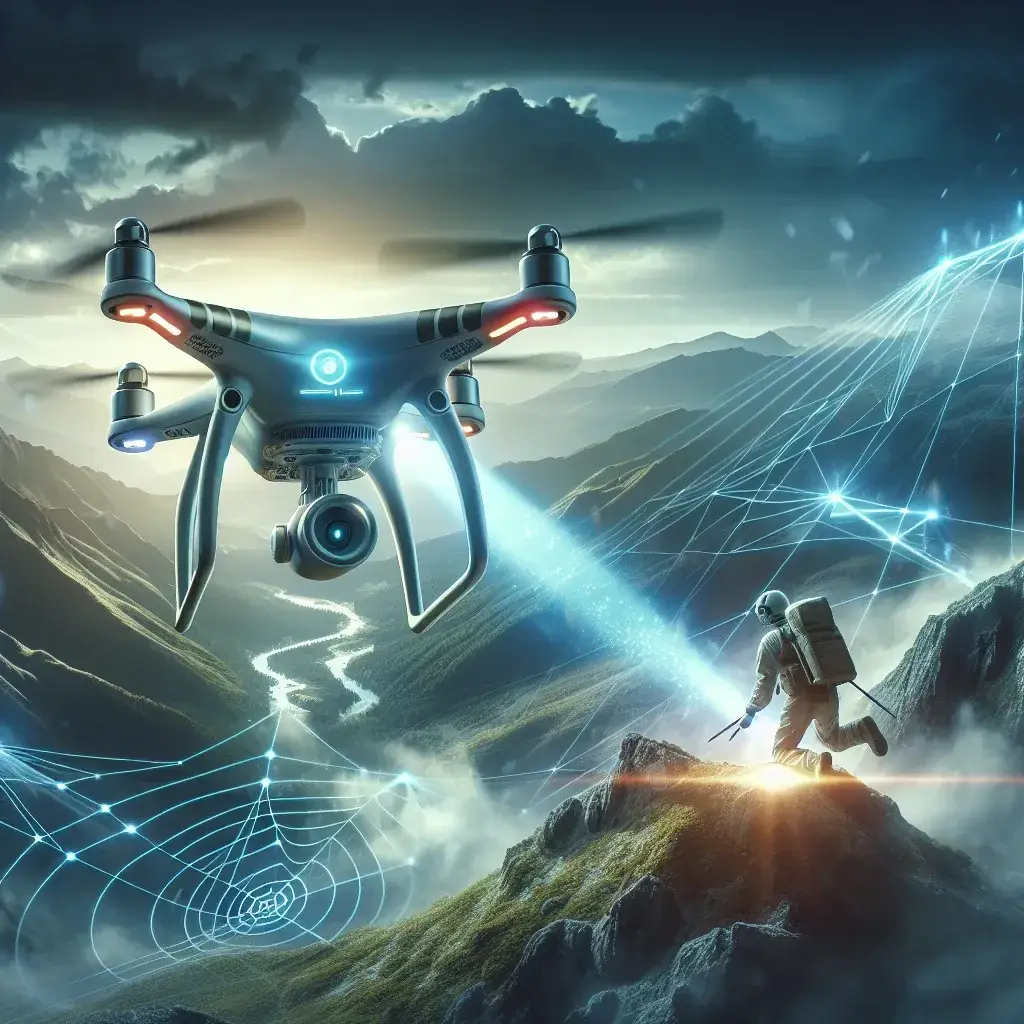Introduction
In recent years, the integration of technology into rescue operations has significantly changed the landscape of emergency response. One of the latest advancements comes from DJI, a leader in drone technology, which has unveiled drones equipped with AI-powered terrain following capabilities. This innovative technology promises to revolutionize how rescue operations are conducted, enabling faster and more efficient responses in critical situations.
The Evolution of Drone Technology in Rescue Operations
To understand the impact of DJI’s latest drones, it’s essential to look back at the evolution of drone technology in rescue missions. Drones have been utilized in various emergency scenarios, such as natural disasters, search and rescue missions, and firefighting efforts. Initially, drones were primarily used for aerial photography and surveillance, but their versatility has led to their adoption in life-saving operations.
Historical Context
- Early Adoption: In the early 2000s, drones were first used in military contexts, but their potential for civilian use became evident after several high-profile rescue missions.
- Technological Advancements: As sensor technology and GPS capabilities improved, drones became more reliable for real-time data collection and monitoring.
- Regulatory Changes: The relaxation of regulations by aviation authorities paved the way for broader use of drones in rescue operations.
What Are AI-Powered Terrain Following Drones?
DJI’s new drones come equipped with advanced AI algorithms that enable terrain following capabilities. This technology allows the drones to automatically adjust their altitude and flight path based on the terrain they are navigating. By utilizing sensors and cameras, these drones can scan their environment in real-time and make rapid adjustments to maintain an optimal flight path.
Key Features
- Real-Time Data Processing: The drones can process data in milliseconds, allowing them to navigate complex terrains such as mountains, forests, or urban environments.
- Obstacle Avoidance: Advanced sensors help the drones identify and avoid obstacles, ensuring safe navigation even in challenging conditions.
- Autonomous Navigation: The drones can automatically follow a pre-set path while adjusting to changes in terrain without manual intervention.
Benefits of AI-Powered Terrain Following in Rescue Operations
The introduction of AI-powered terrain following technology in drones offers numerous benefits specifically for rescue operations:
1. Enhanced Efficiency
Time is crucial during rescue missions. With the ability to navigate difficult terrains autonomously, these drones can reach remote or inaccessible areas quickly, delivering vital supplies, medical assistance, or performing reconnaissance.
2. Increased Safety
Rescue teams often face hazardous conditions when operating in rough terrains. The use of drones reduces the need for personnel to enter dangerous areas, minimizing risks to human life.
3. Improved Data Collection
Drones equipped with AI technology can collect high-resolution imagery and data, which can be invaluable for assessing situations during rescue operations. This information helps rescue teams plan and implement strategies effectively.
4. Cost-Effectiveness
By streamlining operations and reducing the need for extensive manpower and equipment, AI-powered drones can significantly cut costs associated with rescue missions.
Real-World Applications
Several organizations are already looking to incorporate DJI’s AI-powered drones into their rescue operations:
Case Study 1: Natural Disaster Response
During natural disasters such as hurricanes or earthquakes, traditional rescue efforts can be severely hampered. Drones can quickly assess damage, locate survivors, and deliver supplies to isolated areas.
Case Study 2: Search and Rescue Missions
In situations where individuals go missing in remote locations, drones can cover vast areas much faster than ground teams. Their ability to navigate through difficult terrains can make the difference between life and death.
Case Study 3: Firefighting Operations
Drones equipped with thermal imaging can assist firefighters by providing real-time data on fire spread and hotspots, allowing for more effective resource allocation and firefighting tactics.
Challenges and Considerations
While the benefits of AI-powered drones are significant, there are challenges and considerations that must be addressed:
Regulatory Hurdles
As drone technology advances, regulatory frameworks must also evolve to accommodate their use in rescue operations. Ensuring compliance with aviation laws and regulations is crucial.
Technological Limitations
Despite advancements, drones still face limitations such as battery life and payload capacity. Continuous improvements in these areas are essential for maximizing their utility in rescue missions.
Training and Integration
Rescue teams will require training to effectively integrate drones into their operations. Familiarization with technology and best practices is vital for successful deployment.
Future Predictions
The future of drone technology in rescue operations looks promising. As AI continues to evolve, we can expect even greater capabilities, such as:
- Improved Autonomy: Future drones may operate entirely autonomously, requiring minimal human oversight.
- Integration with Other Technologies: Drones may be integrated with other emerging technologies, such as 5G, providing enhanced communication and data transfer capabilities.
- Global Reach: As more organizations adopt drone technology, the global network of drones could facilitate international rescue efforts.
Conclusion
DJI’s unveiling of drones with AI-powered terrain following capabilities marks a significant advancement in rescue operations. By enhancing efficiency, safety, and data collection, these drones are set to revolutionize how emergency responders operate in critical situations. As technology continues to evolve, the future of rescue operations looks brighter, promising a new era of life-saving innovations.

